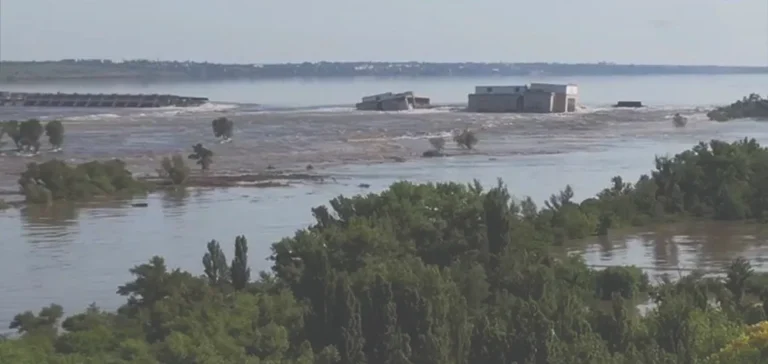The Kakhovka hydroelectric dam, whose destruction significantly impacted Ukraine’s energy and agricultural capacities, could fully regain its functionality in the coming years. The national hydropower operator, Ukrhydroenergo, has unveiled a detailed two-step plan aimed at restoring this critical infrastructure.
An initial rapid temporary restoration phase
The first phase involves a rapid intervention designed to restore the reservoir’s water level. This operation, called a provisional overlay, could be completed in approximately two months once the eastern bank of the Dnipro River is secured. This temporary restoration is crucial for quickly re-establishing regional irrigation systems as well as water supply necessary for cooling the Zaporizhzhia nuclear power plant. Initiation of this phase directly depends on regional military stabilization.
Before its destruction, the Kakhovka dam produced around 335 to 350 megawatts (MW) of electricity. The loss of this energy capacity represents a major challenge for Ukraine’s electricity grid balance, already severely damaged due to the conflict. Ukrhydroenergo thus plans a swift, albeit temporary, restoration to limit immediate economic repercussions in the region.
A comprehensive reconstruction planned in the medium term
The second phase of the reconstruction plan entails a complete refurbishment of the dam and the adjoining hydroelectric power station. Estimated costs for this comprehensive project range between 800 million and one billion dollars, excluding related infrastructure such as the associated road bridge and railway. This full reconstruction is projected to span a period of five to six years, encompassing design phases, site preparation, and heavy construction works.
Ukrainian authorities have confirmed the necessity of international coordination for the project’s funding and technical implementation. Prime Minister Denys Shmyhal had already validated, as of July 2023, a detailed provisional schedule covering two years of preparatory and security work prior to launching major operations. Ukrhydroenergo emphasizes that the effective timetable will depend entirely on the withdrawal of foreign military forces from the concerned area.
Strategic and economic consequences
The complete restoration of the Kakhovka dam will have immediate positive implications for Ukraine’s agricultural and energy sectors. The Kakhovka reservoir is essential not only for electricity production but also for irrigating significant agricultural lands directly dependent on the water supply regulated by the dam.
Moreover, full rehabilitation of the site will ensure the security of cooling installations at the nearby Zaporizhzhia nuclear power plant, a major regional nuclear safety concern. Lastly, this operation could also positively influence Ukraine’s economic attractiveness and stability of international investments, given the strategic importance of this major energy infrastructure.






















